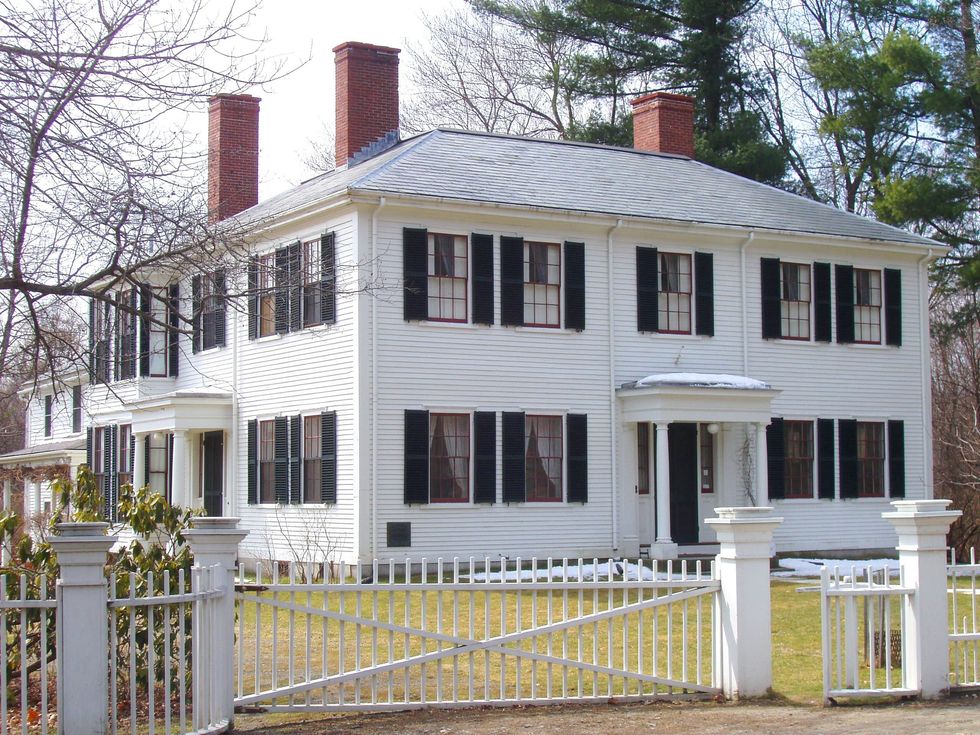The Women’s U.S. Open in golf is the most prestigious tournament the ladies play. This year, extra attention was paid to the tournament due to its location: Trump National Golf Club, one of 17 courses owned by the president.
For the past year, the Ladies Professional Golf Association (LPGA) and the United States Golf Association (USGA) faced pressure to move the tournament after Trump’s infamous “Access Hollywood” tapes surfaced. UltraViolet, a nonprofit specializing in the advancement of women’s rights and the fight against sexism, collected over 100,000 signatures on a petition to move the venue and organized several protests at LPGA tournaments, flying planes with banners attached saying, “USGA & LPGA Dump Trump!” Sports journalists picked up the thread, penning columns shaming the USGA for what they saw was complicit support of sexist behavior.
In many ways, the tournament turned into a women’s rights discourse. Co-founder of UltraViolet Shaunna Thomas said in an interview that she did not want the limelight to be taken away from the players but also believed this was an important opportunity to bring awareness to sexism, saying, “This isn’t a lesser issue than others because Donald Trump represents an existential threat for women. Just in virtue of the person he is and the power that he holds, he could be a known sexual predator and still receive enough votes to become president of the United States, and that is a real threat to women’s safety.”
Some golf lovers saw it as an opportunity for women’s golf to receive more exposure. Not quite. Women’s golf did not receive more exposure: It was Trump who stole the spotlight before the tournament began amid rumors that he would attend the tournament and present the trophy to the winner.
In fact, there was no proof that more people tuned in to watch women’s golf simply because Trump would be there. Crowds actually looked considerably smaller than previous years, and several accounts from players and caddies fought the notion that somehow Trump would draw bigger crowds.
Missy Pederson, a caddie with the LPGA said, “This is the 10th U.S. Open I have caddied and upon entering the merchandise tent I immediately noticed how small it is in comparison to previous years. So I asked why? Eventually I was informed that the merchandise orders were driven by ticket sales. One can deduce that small merchandise orders equals small ticket sales. Once tournament play started there were very obvious voids in the gallery, so ticket sales did appear to be down. It's hard to comprehend slow tickets sales at a major event, near a densely populated area like New York City, when three years ago we played in a small town in Pennsylvania and drew almost 140,000 people. So you are left to conclude that either Trump's presence had no impact or it in fact had a negative impact on women's golf.”
Another player, who wished to remain anonymous, said she signed fewer autographs at this year’s U.S. Open due to smaller crowds.
Lizette Salas, who made her fifth cut in a row at the U.S. Open said, “I'm sorry but this is not a U.S. Open experience for spectators or players.”
In previous instances, Trump has declined to appear at an event, citing a desire to not be a distraction. According to Ultimate Fighting Championship president Dana White, Trump said that he would not attend the Floyd Mayweather and Conor McGregor fight because “he feels like he’ll ruin events; he’ll ruin the event if he shows up. Secret Service is going to have to go through the place. They’ll have to shut down streets and create crazy traffic.”
That didn’t stop Trump from becoming the first sitting president to attend the Women’s U.S. Open and taking advantage of an opportunity to promote himself at one of his venues regardless of the distraction his appearance caused the women. Trump does not mind that the focus will be on him and not on the play. As Inbee Park’s caddie Brad Beecher pointed out, “Everybody was turned the other way, away from us, with their cellphone cameras pointed up at the president. We heard the yelling, and then we saw him get up and wave.”
It’s an unfortunate pattern: Women’s golf only receives headlines when controversy surrounds the tournament. The issue is not isolated to women’s golf, and there are certainly several instances when it happens in other women’s sports. As someone who used to play on the LPGA and who still follows women’s golf closely, I can’t help but notice when this happens with women’s golf.
For almost two months, a controversial ruling at the ANA Inspiration arguably cost Lexi Thompson the tournament, and the fallout dominated the news. Despite the coverage, I would hedge a bet with any golfer that they don’t know who actually won that week. (In case you didn’t know: So Yeon Ryu.)
When Wayne Gretzky’s daughter, Paulina, landed on the cover of Golf Digest in May 2014 simply for getting engaged to a golfer, people were irate. Since its founding in 1950, Golf Digest has only published 23 issues with women on the cover. On nine of those covers, a female player shared the cover with other male pros. Golf writers wrote columns asking how the magazine could put Paulina and not an LPGA player on the cover and published these columns in outlets that also show little love for women’s golf. Caring about the representation of women golfers can’t only come when it’s convenient to be outraged.
Two years ago, at the Solheim Cup (a dual between top players in Europe and America), Suzanne Peterson came under fire for what was deemed poor sportsmanship toward fellow player Alison Lee. Again, the controversy dominated the headlines rather than the incredible play displayed by the Americans to win the Cup. The focus turned on what many described as catty behavior displayed by the women despite that we see poor sportsmanship in every level of men’s sports.
And most recently, at the ShopRite LPGA Championship in June, a Twitter vote was held for which hot golfer would receive a sponsor’s invite to the tournament. Once again, the focus was on looks and controversy, not on the actual golf.
So this year’s Women’s U.S. Open was no different. The women were forgotten, and the focus was elsewhere.
For Pederson, who has caddied for LPGA player Brittany Lincicome for several years, one thing was clear: “Yes, I 100% think there was more of a focus on Trump that took away from the players. If I'm honest, I would say the same thing about any president or high-profile human being. However, I think what elevated the distraction was the fact that he is such a polarizing figure, particularly as it pertains to women.”
As for how women’s golf is only covered when controversy ensues, Pederson had strong words. “There's this inherent belief that men are somehow more interesting and inspiring as athletes, leaders, and innovators. But the women I see week after week who wake up early every day and scrape and claw to make a living pursuing their passion, they have families and heartbreak and injuries and breakthroughs, and they still find the time to change the lives of people in their communities. But because they don't hit the ball 350 yards off the tee, they are just, well, average. Which apparently means you don't deserve to be compensated the same or covered the same in the media or treated with the same respect.”
While Trump stirred even non-golf fans to have an opinion about the Women’s U.S. Open this week, none of it matters in the end if women’s golf isn’t treated as a legitimate sport and not just when there is controversy to cover. Now people will remember this as Trump’s U.S. Open, and the winner, Sung Hyun Park, will fall in his shadows.
















 This doggo has some concerns. Photo by
This doggo has some concerns. Photo by  Ready to eat.Photo by
Ready to eat.Photo by 

 Let us all bow before Gary, the Internet's most adventurous feline. Photo credit: James Eastham
Let us all bow before Gary, the Internet's most adventurous feline. Photo credit: James Eastham Gary the Cat enjoys some paddling. Photo credit: James Eastham
Gary the Cat enjoys some paddling. Photo credit: James Eastham James and Gary chat with Ryan Reed and Tony Photo credit: Ryan Reed
James and Gary chat with Ryan Reed and Tony Photo credit: Ryan Reed


 Rock deterioration has damaged some of the inscriptions, but they remain visible. Renan Rodrigues Chandu and Pedro Arcanjo José Feitosa, and the Casa Grande boys
Rock deterioration has damaged some of the inscriptions, but they remain visible. Renan Rodrigues Chandu and Pedro Arcanjo José Feitosa, and the Casa Grande boys The Serrote do Letreiro site continues to provide rich insights into ancient life.
The Serrote do Letreiro site continues to provide rich insights into ancient life.

 File:Ralph Waldo Emerson House (Concord, MA).JPG - Wikimedia Commons
commons.wikimedia.org
File:Ralph Waldo Emerson House (Concord, MA).JPG - Wikimedia Commons
commons.wikimedia.org